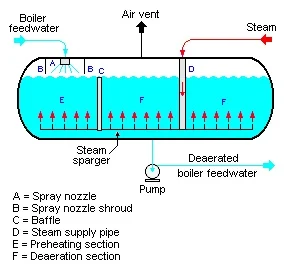Introduction
Gas compression packages play a crucial role in the oil and gas industry by enabling the gathering, processing, and transportation of natural gas from production fields to downstream processing facilities. These packages are designed for various applications, including boosting pipeline pressure, gas storage, and enhancing production efficiency. This article explores the engineering principles behind gas compression packages, including design considerations, material selection, key components, safety measures, international standards, and maintenance practices.
Principles of Gas Compression
Gas compression is the process of increasing the pressure of natural gas to facilitate its transportation and utilization. The process follows the fundamental thermodynamic principles of the ideal gas law:
tPV = nRT
where:
-
P = Pressure
-
V = Volume
-
n = Number of moles of gas
-
R = Gas constant
-
T = Temperature
As gas is compressed, its pressure increases while its volume decreases. To prevent excessive temperature rise, cooling mechanisms such as intercoolers and aftercoolers are used.
Types of Gas Compressors
Gas compression packages are categorized based on the type of compressor used:
-
Reciprocating Compressors:
-
Positive displacement type
-
Driven by gas engines or electric motors
-
Suitable for high-pressure applications
-
Used in gas lift operations and pipeline boosting
-
-
Rotary Screw Compressors:
-
Continuous compression mechanism
-
Less maintenance-intensive
-
Suitable for medium-pressure applications
-
-
Centrifugal Compressors:
-
Dynamic compression principle
-
Used in high-flow applications such as LNG plants
-
Efficient for large-scale gas transmission
-
-
Axial Compressors:
-
Suitable for large gas volumes with moderate pressure ratios
-
Used in gas turbine power plants and industrial applications
-
Applications of Gas Compression Packages
-
Gas Gathering Systems: Collecting gas from wellheads and transporting it to processing plants.
-
Pipeline Transmission: Increasing gas pressure to maintain flow through long-distance pipelines.
-
Gas Storage: Injecting gas into underground reservoirs for future use.
-
Enhanced Oil Recovery (EOR): Injecting high-pressure gas into oil reservoirs to improve extraction.
-
LNG Production: Compressing natural gas for liquefaction and transportation.
-
Petrochemical and Refining: Processing hydrocarbons for downstream industrial applications.
Key Components of a Gas Compression Package
-
Compressor Unit: The core component responsible for gas compression.
-
Driver (Prime Mover):
-
Gas-fueled reciprocating engines
-
Variable speed electric motors
-
-
Coolers:
-
Intercoolers reduce gas temperature between compression stages.
-
Aftercoolers lower gas temperature before delivery.
-
-
Piping and Valves:
-
High-pressure pipelines
-
Check valves, safety relief valves, and pressure control valves
-
-
Lubrication System:
-
Ensures smooth operation and minimizes wear and tear.
-
-
Control and Monitoring Systems:
-
Pressure, temperature, and flow measurement devices.
-
SCADA (Supervisory Control and Data Acquisition) for remote monitoring.
-
-
Safety Systems:
-
Emergency Shutdown (ESD) systems
-
Fire and gas detection sensors
-
Blowdown valves
-
Material Selection and Standards
Gas compression packages are constructed using high-strength materials to withstand extreme pressure and temperature variations. Common materials include:
-
Carbon Steel: Used for high-pressure pipelines and structural components.
-
Stainless Steel: Provides corrosion resistance for offshore and sour gas applications.
-
Nickel Alloys: Suitable for cryogenic and extreme temperature conditions.
International Standards and Regulations
To ensure safety and reliability, gas compression packages must comply with global industry standards, such as:
-
API 618 – Reciprocating compressors for petroleum, chemical, and gas industries.
-
API 619 – Rotary-type compressors for gas handling.
-
API 672 – Packaged centrifugal compressors.
-
ASME B31.3 – Process piping standards.
-
ASME BPVC Section VIII – Pressure vessel design requirements.
-
ISO 10440 – International standard for reciprocating compressors.
-
NFPA 70 (NEC) – Electrical safety in hazardous locations.
Operational Safety Measures
-
Pressure Relief Systems:
-
Overpressure protection through relief valves.
-
-
Gas Detection Systems:
-
Continuous monitoring of leaks.
-
-
Emergency Shutdown (ESD) Systems:
-
Automatic shutdown during unsafe conditions.
-
-
Fire Suppression Systems:
-
Foam and water-based extinguishing systems.
-
-
Routine Inspections & Maintenance:
-
Periodic testing in accordance with API and ASME standards.
-
Maintenance Strategies
-
Preventive Maintenance:
-
Regular inspection of seals, bearings, and lubrication systems.
-
-
Predictive Maintenance:
-
Condition monitoring using vibration analysis and thermal imaging.
-
-
Corrective Maintenance:
-
Repairs and part replacements as needed.
-
-
Preservation Instructions:
-
Protective measures for idle or stored equipment.
-
Conclusion
Gas compression packages are essential in optimizing natural gas transportation, processing, and storage. With proper design, material selection, compliance with international standards, and rigorous safety protocols, these systems can operate efficiently and safely. As the energy industry evolves, advancements in automation, predictive maintenance, and environmentally friendly technologies will continue to enhance the performance of gas compression systems.















